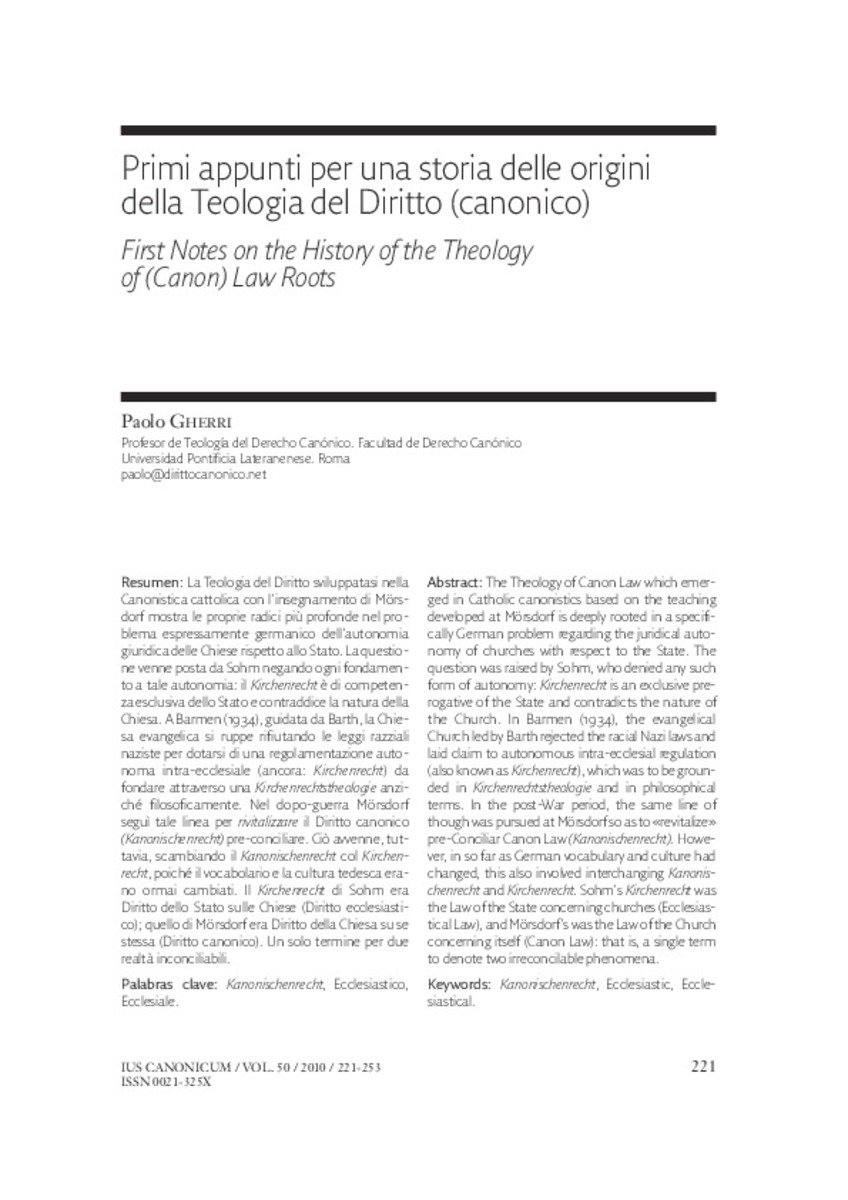Primi appunti per una storia delle origini della Teologia del Diritto (canonico)
Otros títulos :
First Notes on the History of the Theology of (Canon) Law Roots
Palabras clave :
Kanonischenrecht
Ecclesiastico
Ecclesiale
Ecclesiastic
Ecclesiastical
Fecha de publicación :
2010
Editorial :
Instituto Martín de Azpilcueta
Cita:
IUS CANONICUM, 2010, 50, N. 99, págs. 221-253.
Aparece en las colecciones:
Estadísticas e impacto
0 citas en

0 citas en

Los ítems de Dadun están protegidos por copyright, con todos los derechos reservados, a menos que se indique lo contrario.








